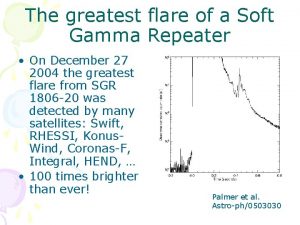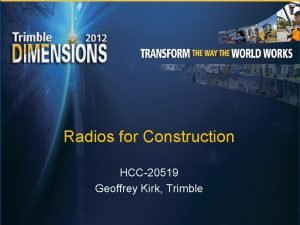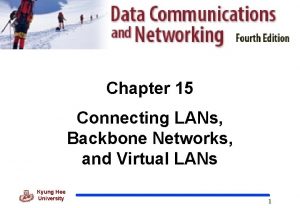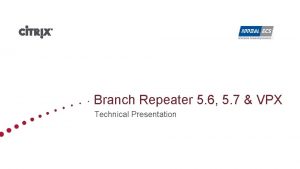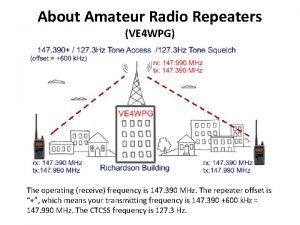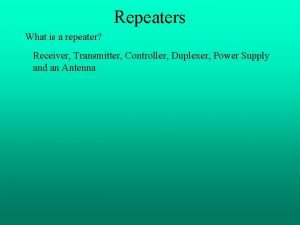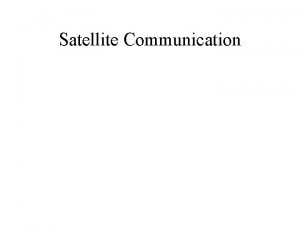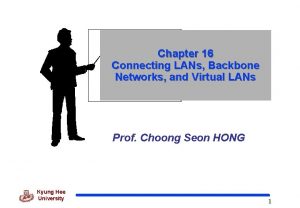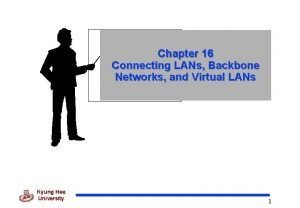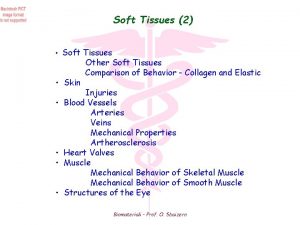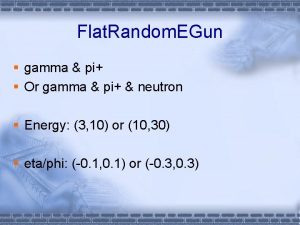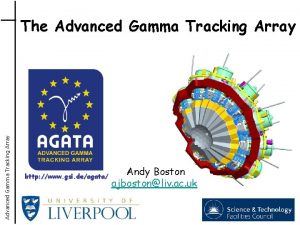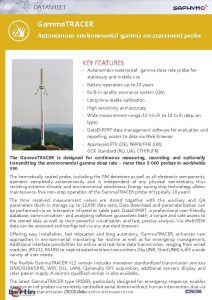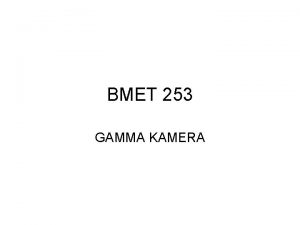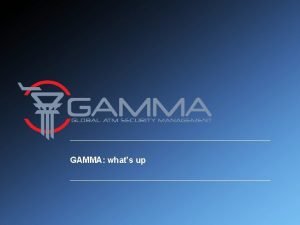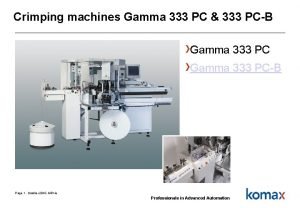The greatest flare of a Soft Gamma Repeater



















- Slides: 19

The greatest flare of a Soft Gamma Repeater • On December 27 2004 the greatest flare from SGR 1806 -20 was detected by many satellites: Swift, RHESSI, Konus. Wind, Coronas-F, Integral, HEND, … • 100 times brighter than ever! Palmer et al. Astro-ph/0503030


Magnetars in the Galaxy • 4 SGRs, 8 AXPs, plus candidates, plus radio pulsars with high magnetic fields … • Young objects (about 104 yrs). • Probably about 10% of all NSs.

Alternative theory • • Fossil disk Mereghetti, Stella 1995 Van Paradijs et al. 1995 Alpar 2001 Marsden et al. 2001 Problems …. . How to generate strong bursts?

Why “magnetars”? • • d. E/dt > d. Erot/dt By definition: magnetically-powered NSs P-Pdot Direct field measurements (Ibrahim et al. )

Known magnetars • • • SGRs 0526 -66 1627 -41 1806 -20 1900+14 +candidates • • • AXPs CXOU 010043. 1 -72 4 U 0142+61 1 E 1048. 1=5937 1 RXS J 170849 -40 XTE J 1810 -197 1 E 1841 -045 AX J 1844 -0258 1 E 2259+586

Magnetic field measurements • Direct measurement of the magnetic field of the SGR • Spin-down • Long periods Ibrahim et al. 2002

Are SGRs and AXPs relatives? • SGR-like bursts from AXPs • Spectral properties • Quiet periods of SGRs (0525 -66 since 1983) Gavriil et al. 2002

Historical notes • 05 March 1979. Cone experiment. Venera-11, 12 (Mazets et al. ) • Event in LMC. SGR 0520 -66. • Fluence: about 10 -3 erg/cm 2 Mazets et al. 1979

Main types of activity of SGRs • Weak burst. L<1041 erg/s • Intermed. bursts. L=1041– 1043 erg/s • Giant bursts. L<1045 erg/s • Hyperflares. L>1046 erg/s See a review in Woods, Thompson astro-ph/0406133

Common (weak) bursts from SGRS and AXPs • Typical burst from SGR 1806 -29, SGR 1900+14 and from AXP 1 E 2259+586 observed by RXTE (from Woods, Thompson, 2004, astro-ph/0406133) (from Woods, Thompson 2004)

Intermediate SGR bursts • Four intermediate bursts. However, the forth is sometimes considered as a giant one (from Woods, Thompson) (from Woods, Thompson 2004)

Giant flare from SGR 1900+14 (27 Aug 1998) • Data from Ulysses (figure from Hurley et al. 1999 a) • Spike 0. 35 sec • P=5. 16 sec • L>3 1044 erg/s • ETOTAL>1044 erg • Influenced the Earth ionosphere Hurley et al. 1999

27 Dec 2004 giant outburst of SGR 1806 -20 • • Spike 0. 2 sec Fluence 1 erg/cm 2 E(spike)3. 5 1046 erg L(spike)1. 8 1047 erg/s Long tail (400 s) P=7. 65 s E(tail) 1. 6 1044 erg Distance 15 kpc

Konus-Wind data om SGR 1806 -20 27 Dec 2004 flare Mazets et al. 2005

SGR giant flares vs. GRBs Woods et al.

SGRs and starformation • Possibility of a SGR detection outside the Local group of galaxies • Starforming galaxies are the best sites for a search • <5 Mpc. M 82, M 83, NGC 253 • About 40 Mpc. Arp 299, NGC 3256 • Possible candidates in the BATSE catalogue of short GRBs (Popov, Stern 2005)

Theory of magnetars • Thompson, Duncan Ap. J 408, 194 (1993) • Entropy-driven convection in young NSs generate strong magnetic field • Twist of magnetic field lines

Magnetars origin (a speculative discussion) • Fast rotation is necessary (Thompson, Duncan) • Spin-up of a progenitor star in a binary via accretion or synchronization • Coalescence • About 10% of NSs (Popov, Prokhorov 2005)
 Bevels and flares
Bevels and flares Gamma flare
Gamma flare Repeater
Repeater Trimble snb900 repeater setup
Trimble snb900 repeater setup A repeater is a connecting device that operates in the
A repeater is a connecting device that operates in the Ictgames writing repeater
Ictgames writing repeater Citrix branch repeater
Citrix branch repeater Manitoba repeater society
Manitoba repeater society Controllers & repeaters
Controllers & repeaters Microwave repeater
Microwave repeater Tekrarlayıcı (repeater) nedir
Tekrarlayıcı (repeater) nedir Redstone decoder
Redstone decoder Repeater etiquette
Repeater etiquette Bus backbone
Bus backbone Echolink.org
Echolink.org A repeater is a connecting device that operates in the
A repeater is a connecting device that operates in the Supposing a snowmobile is equipped with a flare
Supposing a snowmobile is equipped with a flare Iridocylitis
Iridocylitis Anterior lumbar tender points
Anterior lumbar tender points Civica flare
Civica flare

